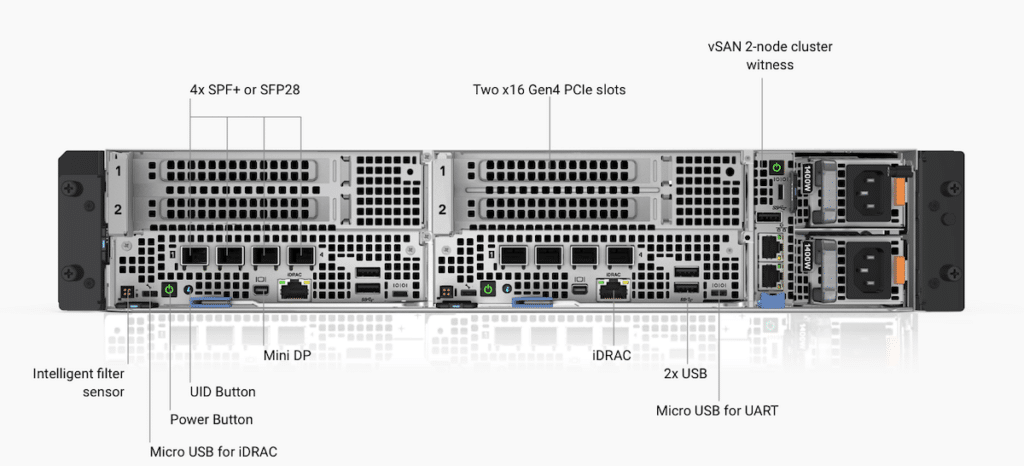At VMware Explore last August, Dell coyly pre-announced a new rugged version of their popular VxRail appliances with a dedicated hardware witness. The thing was, at the time, Dell didn’t actually offer the server that was loosely described in the launch. The PowerEdge team solved that problem a few weeks later, dropping the XR4000 platform. Now, the Dell VxRail VD-4000 appliances based on the XR4000 are ready for a variety of rugged edge IT needs.
At VMware Explore last August, Dell coyly pre-announced a new rugged version of their popular VxRail appliances with a dedicated hardware witness. The thing was, at the time, Dell didn’t actually offer the server that was loosely described in the launch. The PowerEdge team solved that problem a few weeks later, dropping the XR4000 platform. Now, the Dell VxRail VD-4000 appliances based on the XR4000 are ready for a variety of rugged edge IT needs.
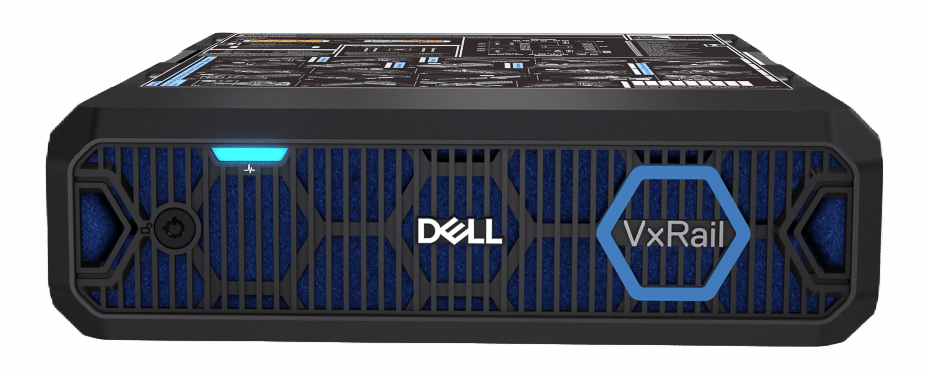
Dell VxRail VD-4000
Dell VxRail VD-4000 Family
Like the PowerEdge XR4000, the VxRail VD-4000 comes in many different configurations based on customer needs. The first part of the decision tree is the chassis itself. The tiny shoebox option is the VD-4000z, a small and portable version. The VD-4000r is a 2U rack-mountable chassis that can handle up to four nodes. Both systems come with the vSAN witness card.
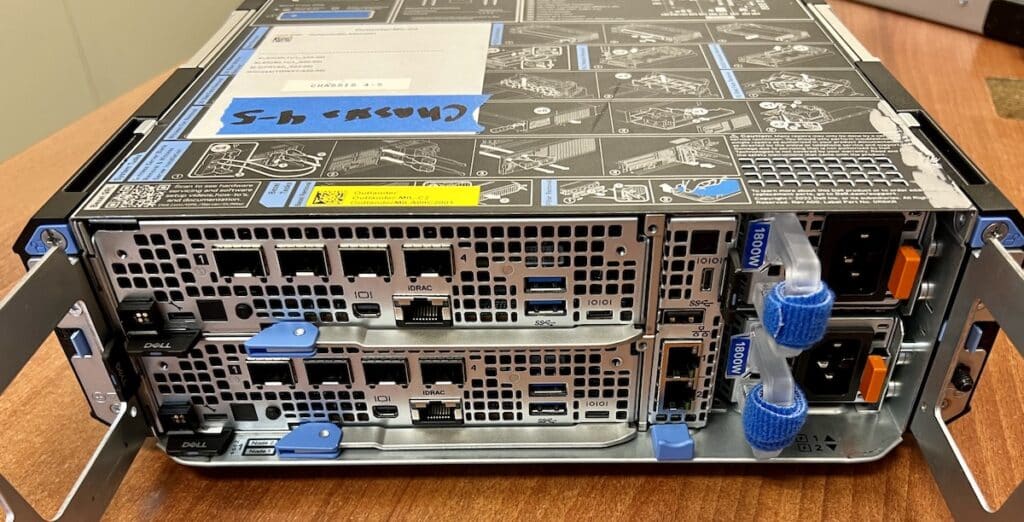
Dell VxRail VD-4000z
As seen above, the VD-4000z holds two 1U compute nodes. The witness card is oriented vertically to the right of those nodes, followed by the twin power supplies on the far right. Should a customer prefer, they can instead leverage a single 2U node which adds support for NVIDIA A2 and A30 GPUs, perfect for inferencing at the edge. Another interesting note is that because the VD-4000z chassis is so small, it offers some unique mounting benefits. Dell has a kit where these can be stacked together to create a little two-unit cluster. They can also stow it away in places where a traditional rack chassis won’t be able to fit, like on the side of a wall, within a 2-rail rack, or in a ceiling mount, thanks to VESA or DIN mount options.
Looking at the VD-4000r chassis above, you can see the configuration with twin 2U nodes, vSAN witness, and power supplies. Should a more compute-dense configuration be needed, customers could opt for four 1U nodes instead.
To support the rugged edge use cases, the VD-4000 can operate in temperatures from 27 F to 131 F (–5 C to 55 C) and has been tested to withstand shock and vibration with Network Equipment-Building System (NEBS) and Military Standard (MIL-STD) certifications.
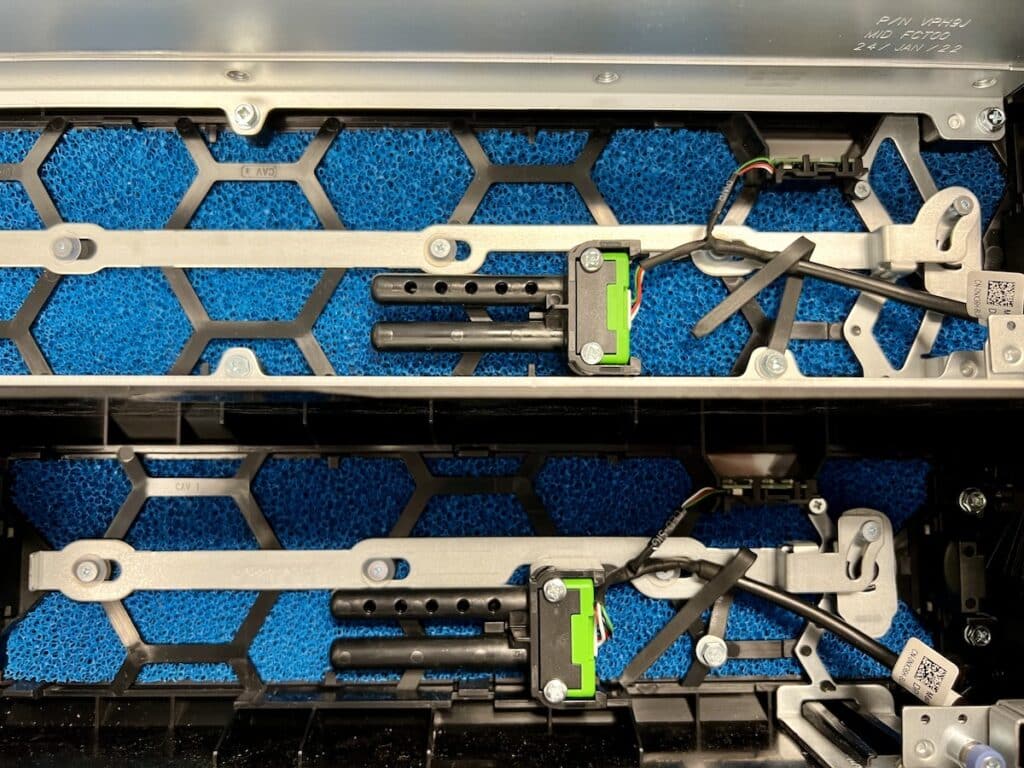
Dell VxRail VD-4000 Bezel Airflow Sensor
Both VD-4000 chassis also have the option to include a lockable intelligent filtered bezel that will alert users when clogged. As seen in the photo above, each bezel has an airflow sensor embedded within it. Should a blockage occur, the blue mesh filter in the bezel can be easily removed and cleaned or replaced. The filter and alerting system are especially useful at edge locations that tend to be less neat and tidy than the typical data center.
Dell VxRail VD-4000 Compute Nodes
As noted, both chassis come with two compute sled options at launch. The VD-4510c is the 1U compute node powered by an Intel Xeon D CPU with up to 20 cores. The 2U VD-4520c uses the same Intel CPUs but offers an additional riser to support a GPU.
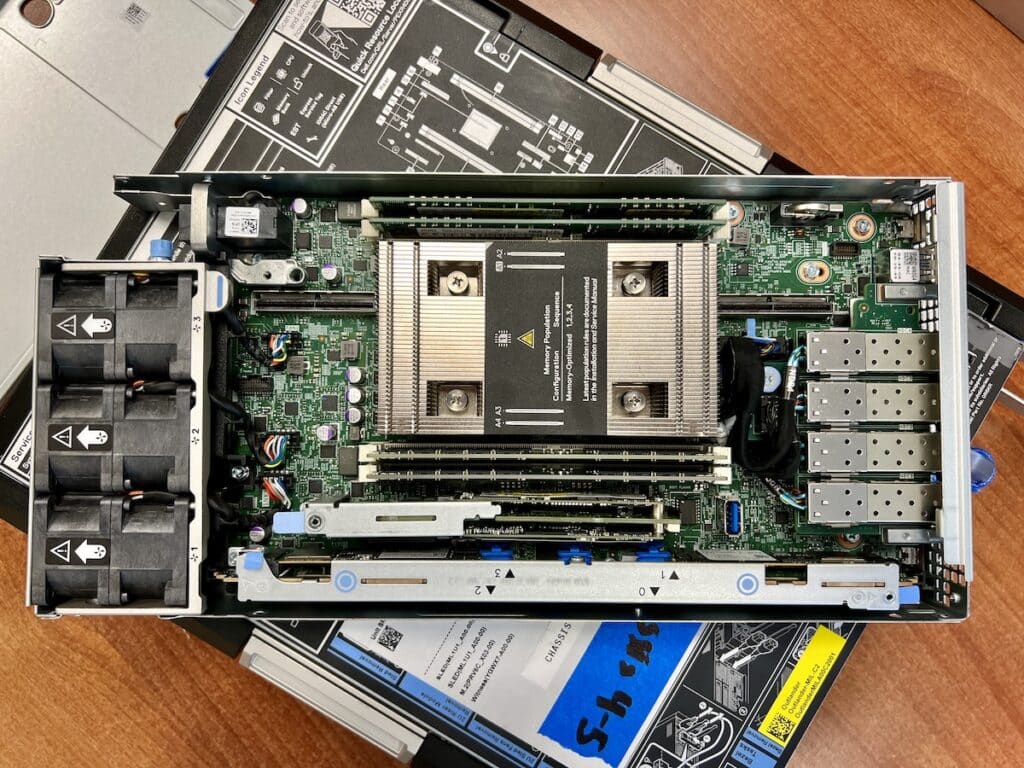
Dell VxRail VD-4510c Node
Both offer an M.2 storage sled that supports up to four NVMe SSDs. Dell has also included the new NVMe BOSS drive, which allows for a RAID1 boot volume.
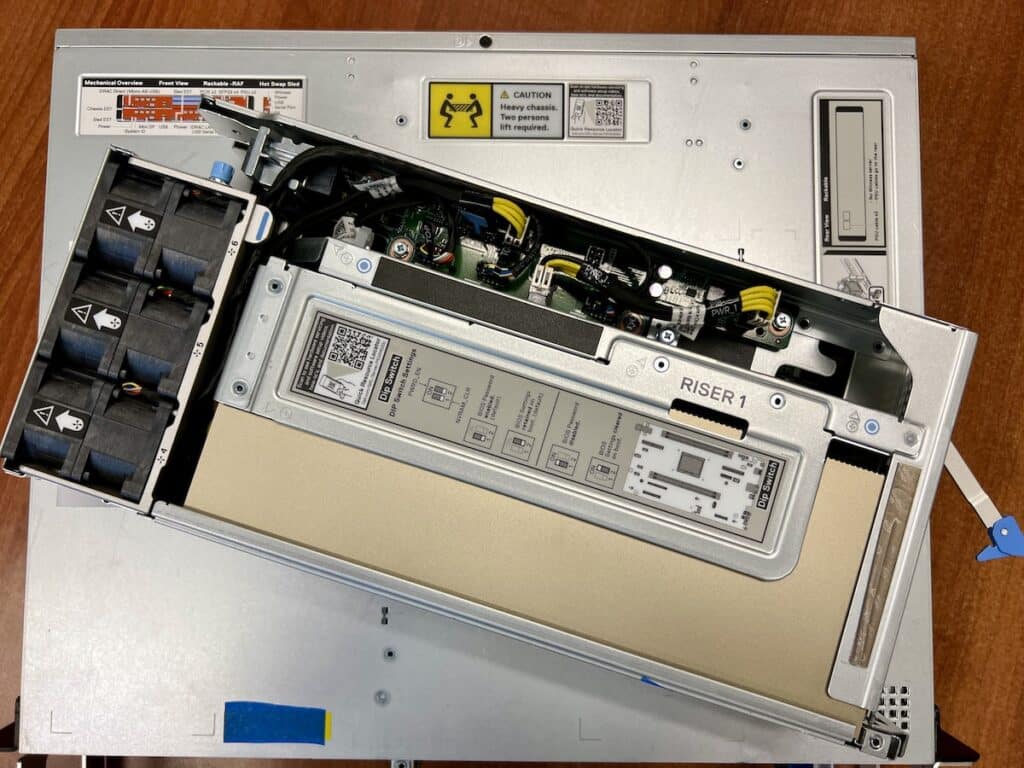
Dell VxRail VD-4520c Node
In terms of connectivity, the nodes both offer support for four SPF+ or SFP28. Each node also has an iDRAC port, diagnostic ports, indicator light, power button, and connection to the intelligent filter sensor in the bezel.
Dell VxRail VD-4000 Witness
Saving the best for last, the VD-4000 supports a vSAN witness, saving the need for a dedicated third node. The witness is an absolutely critical component when it comes to enabling these two-node configurations. The card runs a dedicated Intel Atom CPU with two RJ45 connections. For networking, the witness gets cabled directly to the compute nodes. It also has a power button/LED, USB port, and UART connection.
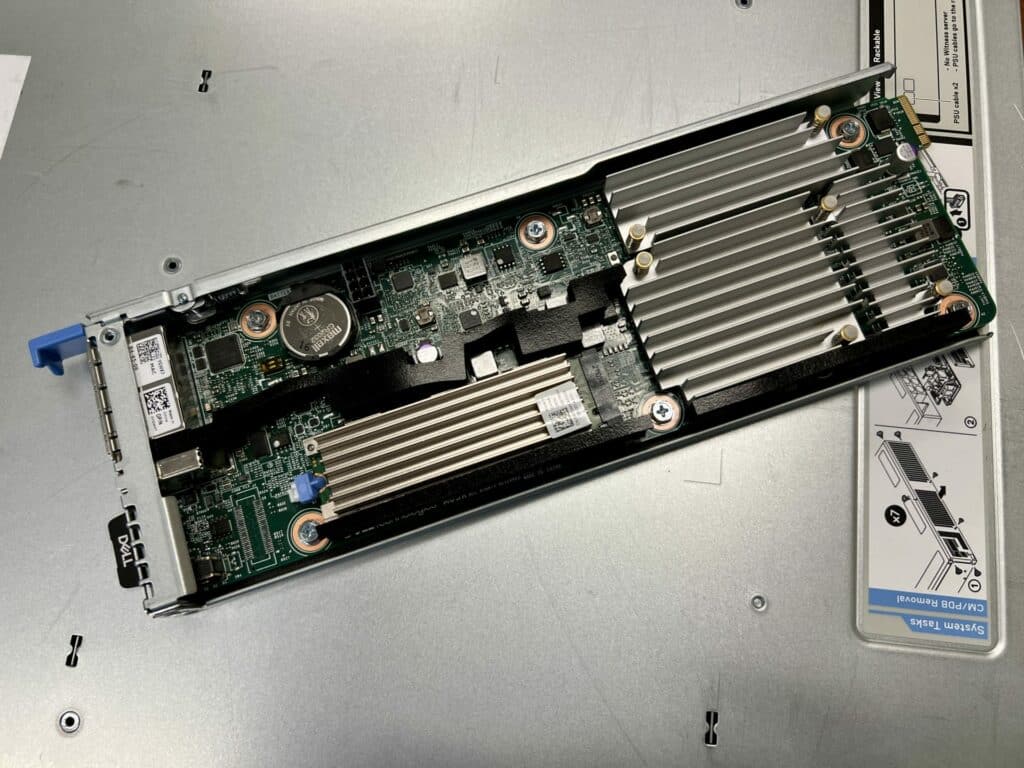
Dell VxRail VD-4000 Witness
Because the VD-4000 chassis can leverage this hardware-based witness, the overall VxRail solution should be much more reliable than other two-node vSAN configurations that have to use virtual, cloud, or other creatively configured witnesses. The witness is also managed by VxRail for lifecycle updates, making it a fully integrated solution.
Market Impact
Del has long offered edge solutions for manufacturing, retail, military, and other diverse applications. That said, the PowerEdge XR4000 and now the VxRAil VD-4000 take Dell’s edge portfolio to a new level. The tiny VD-4000z chassis is the highlight, cramming a GPU node or pair of compute nodes into a tiny footprint. Further, you can stack two of these together to make a larger cluster. Or use a VESA mount to stick it just about anywhere. Additionally, the witness is a brilliant innovation that lets these VxRail clusters remain small and more cost-effective for the edge without compromising on data integrity. Dell appears heavily committed to edge infrastructure, and we’ll be quite interested to see what else comes from this reinvigorated effort.
Engage with StorageReview
Newsletter | YouTube | Podcast iTunes/Spotify | Instagram | Twitter | TikTok | RSS Feed

